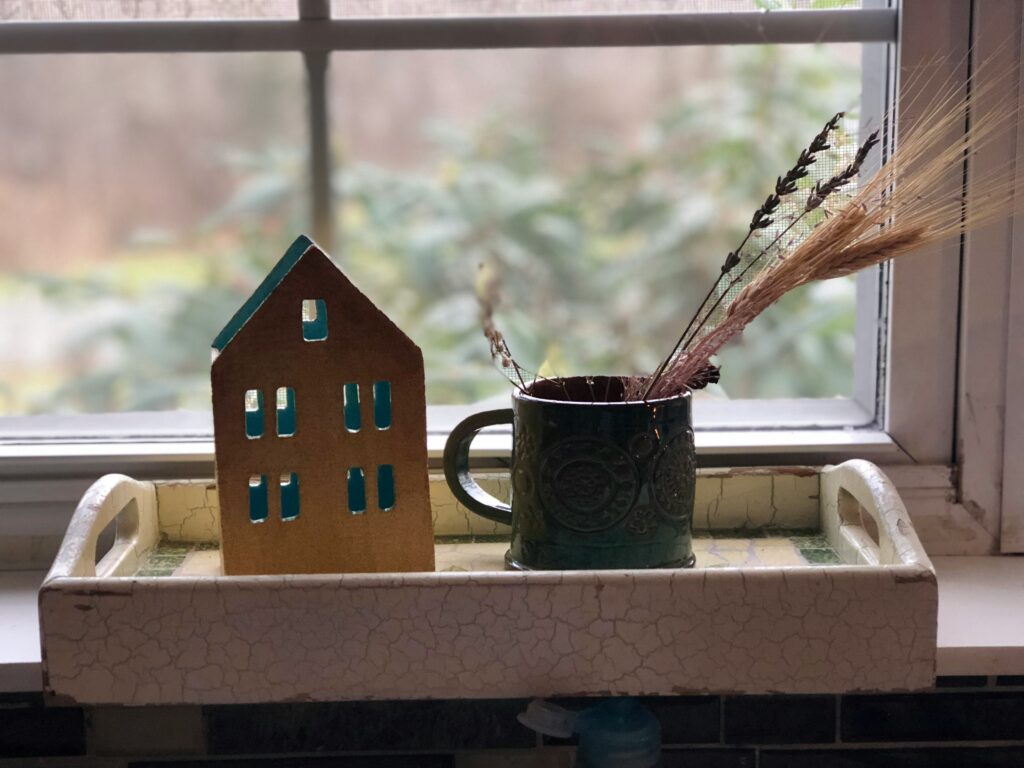Why the Right Tools Make or Break Your Project
A DIY renovation can go one of two ways: slick and satisfying, or tangled in problems that drain time, money, and patience. Nine times out of ten, the difference comes down to tools. Having the right gear—ready, reliable, and suited to the job—turns chaos into process.
It’s not just about cutting straighter lines or drilling faster holes. Good tools reduce mistakes. They make things level, plumb, square, and safe. They help you work faster without sacrificing accuracy, and they lower your risk of injury from trying to “make do.”
But just buying a bunch of tools isn’t the move either. Smart renovators take time to prep before they spend. That means knowing your scope, planning your tasks step by step, and choosing tools to match—not just grabbing what’s on sale. Bonus: when you plan ahead, you avoid rework and duplicate purchases later.
(Pro tip: Read about Smart Planning for Stress-Free Renovations for a solid foundation before you even swing a hammer.)
Measuring & Layout
Start smart. Accuracy now saves headaches later.
– Tape measure – Get one that’s at least 25 feet long with both imperial and metric marks. You’ll need that reach and versatility whether you’re framing walls or laying tile.
– Laser level – When things need to be perfectly straight (shelves, trim, cabinets), don’t fight gravity with a bubble. A laser level makes things dead-on every time.
– Carpenter’s square – This one hides in plain sight. But when you’re checking corners or marking boards, it becomes your right hand. Trust it.
Cutting & Shaping
No two cuts are the same—your tools shouldn’t be either.
– Circular saw – It’s your go-to for ripping plywood, trimming studs, and rough framing. All power, no fuss.
– Jigsaw – When your cuts need to bend or follow a curve, this is the blade for the job. Great for sink cutouts and patterns.
– Utility knife – It handles more than you think. Score drywall, open packaging, trim down shims—it’s small but constantly in use.
– Oscillating multi-tool – Tight spot? Weird angle? The multi-tool gets in where others can’t. Great for door jambs, outlets, or awkward cuts during demo.
Fastening & Drilling
Attention here saves stripped screws—and your patience.
– Cordless drill/driver – The backbone of your fastening kit. Look for one with variable speed and a decent battery life.
– Impact driver – Bring this out for tougher jobs—deck screws, lag bolts, or anything that makes your drill stall out.
– Assorted bits and fasteners – Know your materials (wood, metal, masonry), and keep the proper screws and anchors on hand. Scrambling mid-project kills momentum.
Prep & Demo
Before you build, you dismantle. Do it with deliberate force.
– Pry bar – Not just for demolition. Use it for pulling nails, lifting trim, or nudging boards into position. Accuracy beats brute force.
– Sledgehammer – When it’s demo time-for-real, the sledge gets you through walls and thick materials. Just know what’s behind what you’re swinging at.
– Shop vacuum – Cleanup isn’t optional. A good vac keeps dust down and your space clear—not to mention safer for lungs and tools.
Safety Gear You Don’t Skip
Renovation isn’t just about tools and talent—it’s also about protecting yourself. DIY work can stir up harmful dust, send flying debris your way, or put serious strain on your hands and hearing. The right safety gear is non-negotiable for any successful (and safe) renovation project.
Breathe Clear: Dust Masks and Respirators
Older homes often contain unknown materials—everything from lead paint to mold and asbestos. Even newer construction can raise clouds of drywall or sawdust.
– Dust mask: Basic yet effective for everyday sanding, cutting, or sweeping tasks
– Respirator: A must-have when working with insulation, chemicals, or questionable materials
Eye Protection: Safety Goggles
Sawdust, sparks, and splinters don’t send warnings. Goggles prevent eye injuries that could cost you more than just a project delay.
– Choose wraparound goggles that protect from all angles
– Fog-resistant or ventilated models improve comfort
Guard Your Hearing
Power tools are loud—really loud. Prolonged exposure without protection can lead to permanent hearing damage.
– Earplugs: Lightweight and disposable options for quick jobs
– Over-ear protection: More durable and better for extended use
– Even short jobs deserve ear protection. Don’t skip it.
Protect Your Hands: Work Gloves
From splinters and sharp edges to hot tools and heavy loads, your hands go through a lot. Durable gloves prevent cuts while giving you the grip to work confidently.
– Look for gloves with reinforced palms and touch-screen compatibility
– Choose snug-fitting styles that allow mobility without slipping
Bottom line: You wouldn’t skip a drill when installing drywall—so don’t skip on wearing protection. Safe work is smart work.
Digital Extras for a Smarter Renovation
There’s no glory in measuring a wall five times because you forgot your numbers. This is where smart tools step in.
A stud finder belongs in every DIYer’s kit. You don’t want to guess where to drill or hang; finding framing behind drywall shouldn’t feel like a gamble. Modern models are quick and accurate—and save you from hitting wires or hollow spots.
Laser distance meters beat tape measures for speed and precision. Point, click, done. Perfect for tricky spaces or when you’re working solo and need fast, consistent results.
Project planning apps or toolkit trackers are underrated heroes. Whether it’s tracking your budget, logging tool rentals, or laying out your reno timeline—digital planning reduces decision fatigue and keeps you moving.
Last must-have: a shared cordless battery system. Stick to one brand if you can. Fewer chargers, less clutter, and lower long-term costs. You swap the same batteries between your drill, saw, vacuum—less downtime, more progress.
Bottom line? These tools don’t just do the job—they make you more effective at doing it.
{
“content”: “## Tools Worth Renting Instead of Buying\n\nSome tools are vital — others are situational. The smart DIYer knows when to rent instead of shelling out hundreds for something that gathers dust 11 months out of the year. Here’s where the rental route often makes more sense.\n\nTile Cutter
Unless you’re remodeling bathrooms as a side hustle, this is one to rent. Tile cutters can be bulky, messy, and if you don’t use the right one, frustrating. For a one-time backsplash or floor redo, your local hardware store’s rental aisle has what you need.\n\nFlooring Nailers
Essential for laying engineered or solid wood flooring — and rarely used beyond that. These tools are expensive, heavy, and hyper-specific. Unless you’re planning to install floors throughout multiple properties, renting is the move.\n\nBelt Sander
Handy for stripping old paint or smoothing floors, but they kick out dust like no tomorrow and chew through material fast. Owning one makes little sense unless you’re refinishing surfaces every other weekend. Rent if the job’s rare — not recreational.\n\nDrywall Lift
A lifesaver for hanging ceiling panels without killing your shoulders. But unless drywall installation is your new hobby, skip the purchase. It’s a large, awkward tool with limited use but huge payoff when needed — the type rental programs were made for.\n\nWhen to Rent vs. Invest \nAsk yourself three questions: \n1. Will I use this tool more than 3–4 times a year? \n2. Do I have space to store it properly (and safely)? \n3. Is the cost of purchase justified by time saved and results gained?\n\nIf the answer is mostly no — rent it. Save your budget for the workhorses you’ll grab weekly, not the ones you’ll curse while stepping over in the garage.”,
“id”: “5”
}
Wrapping It Up
Having the right tool isn’t about looking legit—it’s about not losing time, breaking things, or getting hurt. Good tools prevent costly do-overs and protect you from poor decisions made under pressure. Most mistakes in DIY come from not knowing your gear or not having the gear to begin with.
So, don’t just buy the biggest drill or the flashiest laser level. Think ahead. What jobs are you really doing? What happens three steps in—not just at the start? Strategy beats muscle. Watch tutorials. Read the tiny manual. Try things out before demo day.
If you’re wondering where to start, make your first tool a plan. Check out Smart Planning for Stress-Free Renovations for a no-nonsense guide to reducing friction before you even pick up a hammer.
Keep your toolbox lean, your skills sharp, and your expectations grounded. That’s how DIY projects actually get done.




